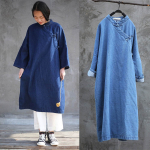 One of the most common questions from home couturiers who consider their figure to be non-standard:
One of the most common questions from home couturiers who consider their figure to be non-standard:
"Do I make patterns from a photo for an individual order according to the measurements taken by the customer?"
I don’t, because only experienced tailors can accurately take measurements.
But a more weighty argument, a “non-standard” figure, in the vast majority of cases, fits into the standards of my patterns.
1. Selection and adjustment of patterns for cut-off dresses
For example, if you have large breasts and narrow hips (picture 1) or wide hips and narrow shoulders (picture 2), you can choose the bodice (from the top to the waist) in one size, and the skirt (down from the waist) in another.
Since the buyer of my patterns receives several sizes in one PDF file of the pattern (from 40 to 52 or from 52 to 64), such a replacement is possible.
Please note that such adjustments to the figure should be done not on paper, but on a fitting (the fitting is described in detail below).
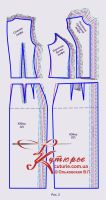 Examples shown in the figures 1 и 2, show a rare large difference in size.
Examples shown in the figures 1 и 2, show a rare large difference in size.
You can choose the style of the owner of figures that combine two sizes among cut-off waist dresses
You should not ignore the “Tatyanka” dresses, in which puffy skirts are assembled from rectangular strips of fabric.
These styles are easy to sew and do not need to be customized, as only the size of the bodice is selected.
2. Fitting patterns for sheath and turtleneck dresses
What if you need to sew, for example, dress - sheath or dress - turtleneck, the patterns of which are not cut off at the waist?
Can be cut for easier fitting  pattern at the waist and cut the bodice and skirt separately.
pattern at the waist and cut the bodice and skirt separately.
 Or you can “reduce” the bodice and skirt of different sizes into one pattern by changing the line of the hips, moving from one size to another (figures 3 и 4).
Or you can “reduce” the bodice and skirt of different sizes into one pattern by changing the line of the hips, moving from one size to another (figures 3 и 4).
Such a correction can be performed on paper before cutting, if all the features of the figure are known and on patterns measurements are imposed customers.
On the 3 drawing - the example of narrow hips + wide shoulders + large breasts is considered. Additional correction of the middle seam of the back. Darts are added based on the features of the figure. In this case, the final adjustment of the tucks is best done at the fitting.
On the 4 drawing - a variant of the figure with wide hips, protruding buttocks and a small belly. Therefore, shelf tucks are not used, but the back tuck will be appropriate for this type of figure. The middle seam of the back was also corrected. For this correction, additional measurements were taken along the back.
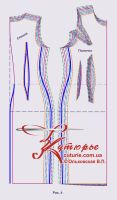 See also how to adjust the middle back seam (paragraph 7 by reference, figures 10 – 13).
See also how to adjust the middle back seam (paragraph 7 by reference, figures 10 – 13).
Please note that the correction of the middle seam of the back can not always be done at the fitting. For some shapes, it is desirable to take additional measurements and make changes to the pattern before cutting.
It is worth noting that for such complex figures, the convenience of patterns cut at the waist is obvious. Seam-cut construction at the waist makes it easy to get a perfect fit and eliminates the need for many extra measurements.
 Just the half-girths of the chest, waist and hips are enough.
Just the half-girths of the chest, waist and hips are enough.
In fact, cutting products require only a standard fitting, which is carried out by tailors when tailoring clothes individually.
3. The order of fitting patterns to the figure on the fitting
Below is what is needed to perfectly fit the bodice to a “non-standard” figure:
- Cut out the bodice with a large allowance at the waist - 3 - 5 cm (picture 5).
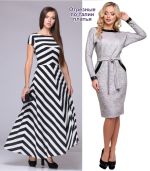 Collect (sweep by hand or machine, slightly ironing the seams).
Collect (sweep by hand or machine, slightly ironing the seams).- Put on the figure and tie with a linen elastic strictly at the waist.
This point requires special attention.
 For different figures, the part of the bodice below the elastic band will be different. Let's deal with this:
For different figures, the part of the bodice below the elastic band will be different. Let's deal with this:
Some they will see that the part under the elastic band on the back side is wider than in front. This is typical for curved figures with a large chest and a relatively "short" back.
Others couturiers will see that the part of the bodice under the elastic band is wider in front - the figure is stooped and / or the chest is small.
The third they will find an even strip of fabric under the elastic band - there will be a minority of these.
There remains one more type of figures - asymmetrical. Usually, asymmetrical figures can be "balanced" by shoulder pads of different thicknesses.
On an elastic band, we mark the waist line. - Now about the correction of the neck and armholes.
Neck correction may be necessary for kinked (the sprout is cut off - from the back side) and stooped figures (the neck is cut off - from the side of the shelf).
About the correction of armholes on the fitting It's already been said in detail, so I won't repeat it.
I will only note that the correction of the neck and armholes should be symmetrical (see point 5 below) 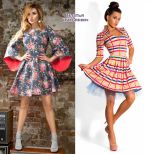 Having marked the waistline under the elastic band, the neckline and armholes, the bodice is folded in half with a fold along the half-skid (middle line of the shelf) and the middle seam of the back.
Having marked the waistline under the elastic band, the neckline and armholes, the bodice is folded in half with a fold along the half-skid (middle line of the shelf) and the middle seam of the back.
In this case, the side seam, tucks and reliefs should be chopped off.
Shoulder seams also need to be chipped off.
We cut off the excess (what is under the elastic), leaving a seam allowance of 1 - 1,5 cm.
If you have planned changes to the neckline and armholes, do it now.
 Please note that such a fit in most cases, even for a “non-standard” figure, may not be useful if certain types of styles are used.
Please note that such a fit in most cases, even for a “non-standard” figure, may not be useful if certain types of styles are used.
4. The choice of patterns of models of the silhouette "trapezoid" for a non-standard figure
For figures with wide hips and not too large breasts (pear type), fitting the pattern of the A-line dress is not required.
However, not all styles from this category will look good on girls with large breasts and narrow hips. Happy owners of a magnificent bust on a sports figure should choose trapeze dresses among those that have a bust tuck.
For example, the
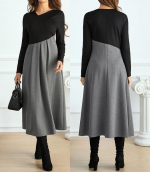 a-line dress with asymmetric yoke
a-line dress with asymmetric yoke
- the tuck improves the fit of the product in the chest area and does not give excess volume in front. The cut of the model is asymmetrical, so one tuck is “removed” into the lower cut of the yoke, and the other is a regular tuck.
Another one
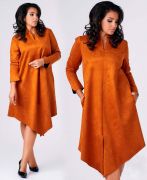 dress pattern - trapeze with a tuck for the chest.
dress pattern - trapeze with a tuck for the chest.
Or
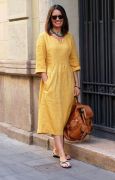 pattern of a dress, the chest tuck of which is embedded in the relief.
pattern of a dress, the chest tuck of which is embedded in the relief.
5. Choice of cocoon silhouette patterns
It is also worth dwelling on a group of patterns of patterns, which can be conditionally called "cocoon" - styles that hide the figure.
5.1. Patterns of "cocoon" dresses, which are more suitable for figures with broad shoulders and / or full breasts, as well as for "apples".
For example, the
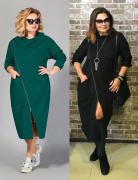 oversized cocoon dress pattern with yoke collar
oversized cocoon dress pattern with yoke collar
- the silhouette form is close to an oval.
Another "oval" silhouette shape -
 oversized dress pattern sweatshirt silhouette "cocoon".
oversized dress pattern sweatshirt silhouette "cocoon".
5.2. Patterns of "cocoon" dresses, which are more suitable for "pears" with small or medium-sized breasts.
Example -
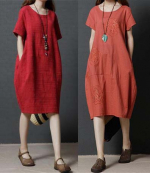 boho patterns of a detachable simple dress "cocoon" - on the basis without a tuck.
boho patterns of a detachable simple dress "cocoon" - on the basis without a tuck.
People passionately love such foundations, to the detriment of the fit of the product.
Another model
into which large breasts “pass” only due to the large volume and one-piece sleeves. But in this case, "the fit is not provided", the dress simply hides the figure.
And the last example of a "cocoon", which is suitable for all types of figures -
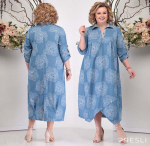 oversized dress pattern cocoon - shirt on a yoke.
oversized dress pattern cocoon - shirt on a yoke.
The bust tuck has been moved to the yoke line, and the silhouette shape is closer to the trapezium than to the oval. This model is suitable for almost everyone.
The same principle of selection should be implemented when choosing coat or jacket patterns
About other options and ways to fit the patterns to the figure and how to put your measurements on the pattern to check it.
A bit more about growth correction of patterns - a small repetition and consideration of the issue from a different angle.
Read also and see illustrations on the topic typologies of female figures
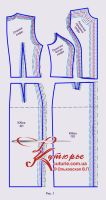


 Join my community on Viber...
Join my community on Viber...

